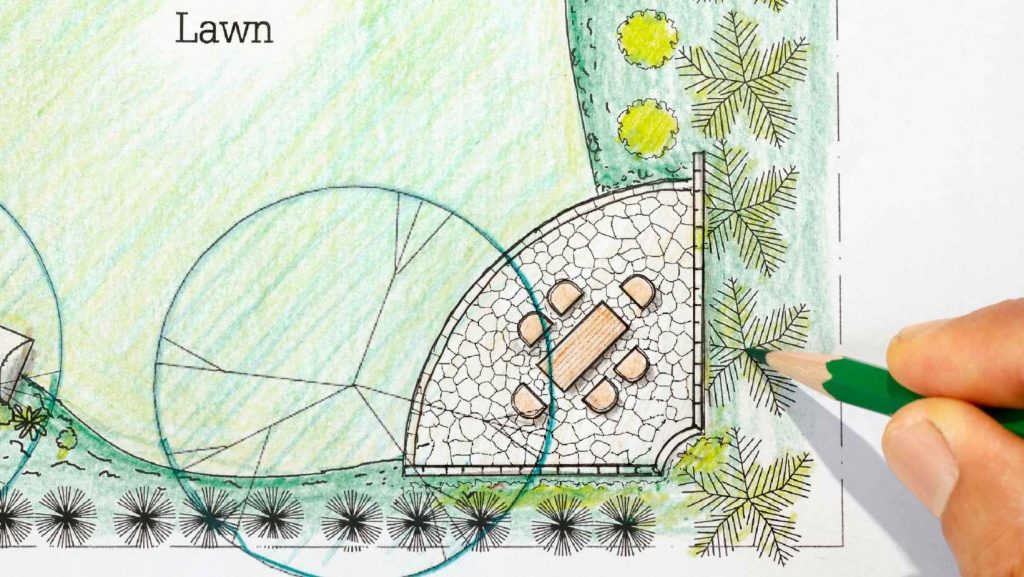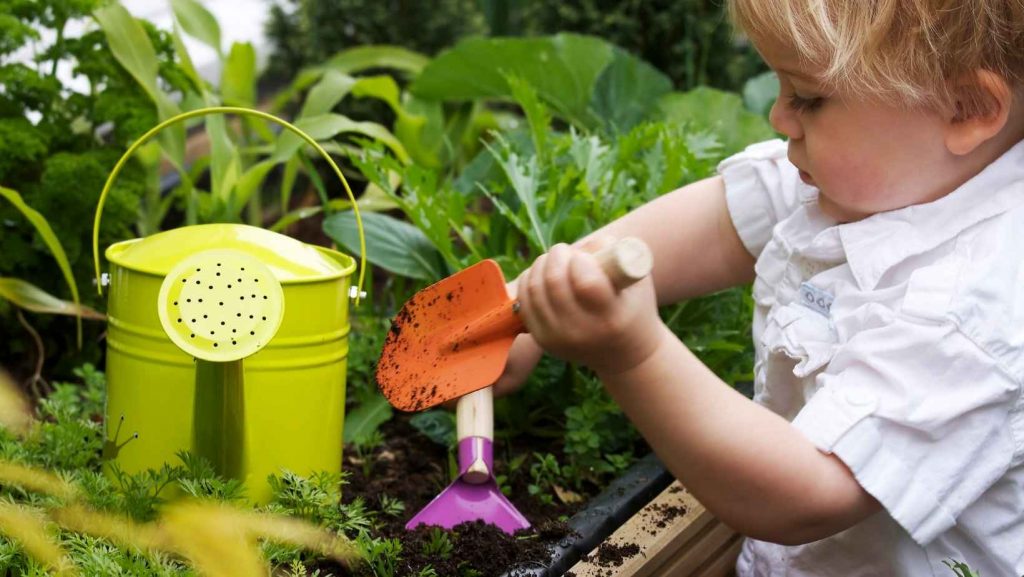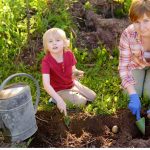Garden planning for kids shouldn’t be stressful! In fact we have turned garden planning for children into a fun and exciting task that will get the kids involved and loving their new garden in no time!

Gardens can be a fun way to get your kids to play outside safely. It creates beautiful memories and fun learning experiences. The kids get an opportunity to learn the life cycle process of plants and appreciate the environment. They can also learn responsibility, independence, and caring for plants.
Kids who garden have an easier time eating veggies and other healthy food. In addition, they can get higher scores in science class! Kids love to watch seeds spring out new life and play with the mud too. So how do you introduce your kids to gardening at home while making it fun and easy?
1. Start Small with Your Garden Planning
Kids’ gardens don’t need much space, small and simple is better to maintain the kids’ interest. You can even opt for flowerpots and plastic containers for starters before committing them to larger gardens. Use only garden basics like fertile soil, water, and direct sunlight to gain the child’s interest and experience. Plant some beans, strawberries, sunflowers, carrots, celery, tomatoes, or other smaller plants that will grow fast.
2. Choose the Right Gardening Tools for Children
Every garden needs quality tools and kids’ gardens are no different. Size-appropriate tools like little shovels, hoes, and durable kids’ gloves can make a huge difference.
You can also pick up smaller watering cans and other smaller tools that kids would enjoy using while gardening.
Let them take care of their own gardening tools to cultivate a sense of independence and responsibility. Before you purchase any item, make sure they’re suitable for your child’s age.
Find the perfect gardening tools and gifts for children here.


3. Choose Kid-Friendly Plants
Not all plants are safe for kids. In fact, some are poisonous or cause skin irritation and can be fatal for kids.
You can do your research before purchasing any plants. For starters, avoid lilies, foxgloves, daffodils, Daphne, Euphorbia, mistletoe, rhubarb leaves, delphinium, and laburnum among others.
Instead, go for fruits, herbs, and vegetables to be extra safe. You can pick tomatoes, lettuce, spinach, peas, beans, radishes, carrots, kale, or even pumpkins to carve during Halloween or make pumpkin pies.
If your child loves flowers, you can consider marigolds, petunias, and snapdragons.
Child-friendly perrenials are an excellent choice. Learn more about safe plants for children’s gardens.
4. Make Gardening Fun!
Gardening is challenging and can get boring fast for your kids and you need to come up with ways to make it fun. You can introduce healthy competition and include a winning price as motivation for them to work hard. Paint the planting containers in different colors for each family member to plant and rank the grade whose plant is the largest, healthiest with the brightest flowers or fruits. For short time interest, you can set up a timer to see who digs, weeds, or waters the plants faster than everyone else waters. You’ll create fond memories while getting the job done.


5. Cultivate Good Habits
Teach your child healthy routines such as watering the plants every day at the same time, cleaning tools after use, and tending the garden regularly. Show your kids how to prune, weed, or water the garden and allow them some space to practice the same on their own. Give them little responsibilities and applaud their good work.
6. Create a Wildlife-Friendly Garden
Help your child pick up plants that attract wildlife like birds, insects, and bees. This could entertain your kids and help them understand the beauty of preserving nature and learn more about them. You can even put up birdhouses, bird feeders, water ponds, and other things that would attract more wildlife to your backyard.
7. Create Some Magic with Miniature Figurines
You can include an enchanted garden at the base of a tree or pond with miniature figurines. Grab a few cute fairy house kits on Amazon or Etsy and ask the kids to help you put them up. Add some lights for fairies to glow in the dark and make the kids believe fairies live in their garden. The kids love that and would look forward to spending time with their little friends outdoors.






8. Create a Play Spot Near the Garden
The kids need a designated area to sit and play in the backyard.
Gardening can be tiring and by providing a shade, seats, and some cool drinks, getting the kids out next time won’t be hard.
Design the area with some raised deck area, add climbing plants for canopy, and some colorful seats.
You can even build them a treehouse with adventurous swings to entertain them after gardening. Make sure the structures are solid with a firm foundation to avoid accidents out there.
9. Bring the Fresh Fruits and Vegetables Indoors
Your kids would be excited to see their fruits and vegetables preparing their meals. They will have a sense of pride and eating veggies won’t be so hard.
Allow them to accompany you in the kitchen, to help clean and slice the ingredients. Use them to make their favorite meals, quick snack, or breakfast cereal.
The key point, let them taste the fruits of their labor.
10. Create Artwork with Garden Items
Set up a craft station with seats and tables out in the garden. Allow your kids to paint the gardening tools, brand them and decorate the nearby walls for that pop of color.
You can even get a chalkboard for your outdoor activities and encourage them to get creative.
You can also recycle plastic containers and use them to decorate the garden, paths, and other spots.
The kids can draw and paint the flowers, birds, bees, insects, and other things they would love to. Furthermore, they can use the flowers from the garden as paint and press them onto their creative drawings. After they dry out, turn them into picture frames, posters, and cards and hang them out there for extra flare.


Final thoughts – Planning a Garden for Children
With the examples above, you can turn dull gardening activities into fun and easy things to do with your kids.
Mix up the activities to keep the young one motivated. Try out new things more often. Turn the gardening time into educational moments while creating new memories.
Remember to snap more pictures and frame them to make it extra special.
The size doesn’t really matter but makes sure they participate. Kindly allow them some space to practice what they have learned. That way they will learn new good habits such as independence, sustainability, and independence.
Get them plants with a short lifespan or fruits they can eat while they play outside. Get creative as you would like and enjoy spending some quality time outside while breathing in some fresh air.
Incorporate all these things into your garden planning for your children and you will surely have one successful children’s garden!
Related Posts
-
How to Grow Potatoes with Kids - Fun and Easy Tips
Learn how to grow potatoes with your kids with this fun and easy guide. Your…
-
How to Create a Butterfly Garden for Kids
Imagine a visual of your garden where you see a group of colourful butterflies gracefully…
-
DIY Fairy Garden for Kids
How Do You Make a Magical Fairy Garden for Kids? You may be wondering, do…



